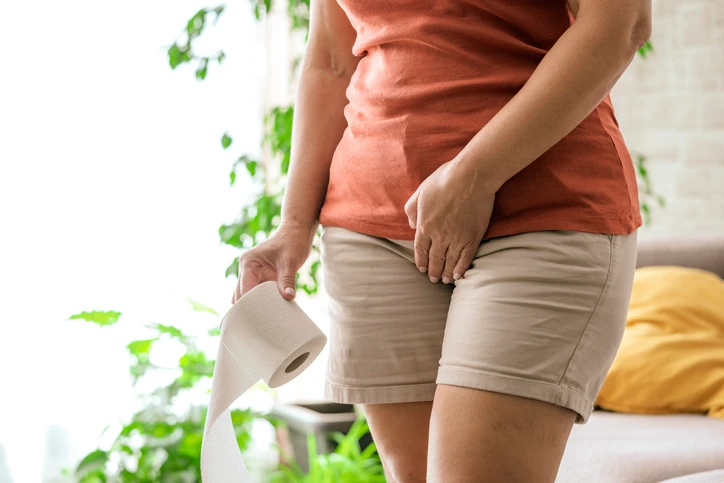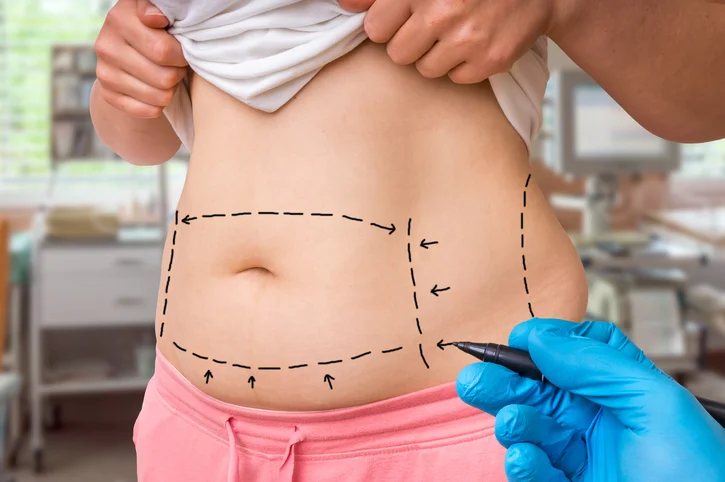
Don’t Let Bladder Issues Control Your Life: Know Your Symptoms and Treatment Options
Have you ever laughed at a joke and suddenly felt a leak? Or perhaps you’ve experienced that urgent need to find a bathroom immediately, only to leak before making it in time? You’re not alone.
Urinary incontinence affects approximately 25 million Americans, with women being twice as likely as men to experience it. While many suffer in silence, understanding the specific type of incontinence you have is crucial for finding effective treatment.
What Is Urinary Incontinence?
Urinary incontinence is the involuntary leakage of urine. Despite affecting up to 45% of women at some point in their lives, it is not a normal part of aging and should not be accepted as an inevitable consequence of childbirth or menopause. It’s a medical condition with various causes and, importantly, numerous treatment options.
Types of Urinary Incontinence
There are several types of urinary incontinence, including:
- Stress incontinence
- Urge incontinence (overactive bladder)
- Overflow incontinence
- Functional incontinence
- Mixed incontinence
In this article, we’ll focus on the two most common types: stress and urge incontinence.
What is Stress Incontinence?
Stress incontinence occurs when physical activities put pressure (or “stress”) on your bladder. This happens because weakened pelvic floor muscles can’t properly support the urethra during moments of increased abdominal pressure. The result is an involuntary leakage of urine during activities like coughing, laughing, or exercising.
What is Urge Incontinence?
Urge incontinence, often called overactive bladder, is characterized by a sudden, intense urge to urinate followed by an involuntary loss of urine. This occurs because the bladder muscle contracts inappropriately, even when the bladder isn’t full. People with urge incontinence often describe feeling like they can’t reach the bathroom fast enough.
The fundamental difference lies in the trigger. Stress incontinence is triggered by physical activities that increase pressure on the bladder, while urge incontinence is triggered by a sudden, often unexplainable urge to urinate that cannot be controlled.
Symptoms and Triggers: Recognizing Your Type
Stress Incontinence Symptoms and Triggers
With stress incontinence, you’ll typically experience small amounts of leakage during activities that increase abdominal pressure, such as:
- Sneezing or coughing
- Laughing heartily
- Lifting heavy objects
- Running or jumping
- Changing positions (standing up from sitting)
The leakage usually stops when the activity ends.
Urge Incontinence Symptoms and Triggers
With urge incontinence, the primary symptoms include:
- A sudden, intense need to urinate
- Frequent urination (more than 8 times in 24 hours)
- Waking up multiple times at night to urinate
- Inability to hold urine long enough to reach the bathroom
Triggers for urge incontinence can be more subtle and may include:
- Hearing running water
- Putting the key in your door when arriving home
- Cold weather
- Drinking even small amounts of liquid
- Anxiety related to bathroom access
Many women experience mixed incontinence—a combination of both stress and urge symptoms. You might leak when you cough or exercise but also experience sudden, urgent need to urinate at other times.
Causes and Risk Factors: Why Stress and Urge Continence Happen
Stress Incontinence Causes and Risk Factors
Stress incontinence typically results from:
- Pregnancy and vaginal childbirth, which can weaken pelvic floor muscles
- Menopause, due to decreasing estrogen levels
- Pelvic surgeries, including hysterectomy
- Obesity, which increases pressure on the bladder
- Chronic coughing from smoking or respiratory conditions
- High-impact activities over time
Women are particularly vulnerable due to their anatomy and the effects of childbirth and hormonal changes.
Urge Incontinence Causes and Risk Factors
Urge incontinence often stems from:
- Neurological conditions affecting bladder signals (multiple sclerosis, Parkinson’s, stroke)
- Bladder irritants (caffeine, alcohol, spicy foods)
- Urinary tract infections or inflammation
- Age-related changes in the bladder
- Enlarged prostate in men
- Certain medications
- Diabetes and other systemic conditions
How to Identify Your Type of Incontinence
To diagnose stress incontinence, your urogynecologist will likely:
- Take a detailed medical history
- Perform a pelvic examination to assess muscle strength
- Conduct a cough stress test (asking you to cough while observing for leakage)
- Request a bladder diary to document leakage episodes
For urge incontinence, diagnostic steps often include:
- Reviewing symptoms and medical history
- Urinalysis to rule out infection
- Postvoid residual measurement to check for complete bladder emptying
- Possibly urodynamic testing to evaluate bladder function
- Bladder diary review focusing on urgency episodes
Why a Bladder Diary is Important
A bladder diary is where you record fluid intake, urination frequency, leakage episodes, and associated activities. It can be invaluable in differentiating between stress and urge incontinence. The patterns revealed often clearly indicate which type predominates.
What are the Treatment Options for Stress and Urge Continence?
Treating Stress Incontinence
At Aguirre Specialty Care, we offer comprehensive treatment options for stress incontinence, including:
Non-Surgical Solutions:
- FemiLift™: This vaginal laser therapy helps restore vaginal tissue and improve support to reduce leakage.
- O-Shot®: Using platelet-rich plasma, this treatment enhances tissue quality and function around the urethra.
- The Viveve™ Treatment: Utilizing radiofrequency energy to strengthen vaginal tissues and improve support.
- Kegel exercises: When properly performed, these exercises strengthen the pelvic floor muscles.
- Pelvic floor therapy: Our specialized therapists guide you through techniques to improve muscle tone and function.
- Vaginal pessary: These removable devices provide support to the bladder neck and urethra.
- Low-dose vaginal estrogen: Helps improve urethral tissue quality and support.
- Urethral insert: A removable device that can be used to prevent leakage during specific activities.
Surgical Options:
- Suburethral sling: A minimally invasive procedure that creates a supportive hammock under the urethra.
- Burch Colposuspension: Stabilizes the bladder neck and urethra to prevent leakage.
- Injectable Bulking Agents and Bulkamid® Urethral Bulking System: Add volume around the urethra to improve closure and prevent leakage.
Treating Urge Incontinence
Our comprehensive management strategies for urge incontinence include:
Non-Surgical Therapies:
- Percutaneous Tibial Neuromodulation (PTNS): A low-risk office procedure that modulates the nerves controlling the bladder.
- Various overactive bladder medications: Medications that calm an overactive bladder and reduce urgent symptoms
Advanced Interventions:
- BOTOX® for Incontinence: Injections into the bladder muscle to reduce contractions that cause urgency and leakage.
- Sacral Neuromodulation: We offer both InterStim™ Therapy and Axonics® Therapy, which involve a small implanted device that sends mild electrical pulses to nerves controlling the bladder.
Our expert urogynecological team works closely with each patient to determine the most appropriate treatment path based on symptom severity, lifestyle factors, and personal preferences.
Can You Prevent Incontinence?
While not all incontinence can be prevented, you can reduce your risk by:
- Performing regular pelvic floor exercises, especially during and after pregnancy
- Maintaining a healthy weight
- Avoiding chronic constipation
- Treating chronic cough
- Managing conditions like diabetes that increase risk
- Quitting smoking
When to Seek Help
It’s time to consult a urogynecologist when:
- Incontinence affects your daily activities
- You find yourself planning around bathroom access
- You’re reducing fluid intake to avoid leakage
- You’re experiencing recurrent UTIs
- You’re using absorbent products regularly
Taking Control of Your Bladder Health
Understanding the difference between stress and urge incontinence is the first step toward effective treatment. At Aguirre Specialty Care in Denver, we specialize in diagnosing and treating all types of urinary incontinence with a comprehensive, personalized approach. Our state-of-the-art facility offers both conservative and advanced treatment options to help you regain confidence and control.
Remember that urinary incontinence, whether stress, urge, or mixed, is a medical condition—not something you should accept as inevitable or untreatable. With proper diagnosis and targeted treatment, the vast majority of women experience significant improvement or complete resolution of symptoms.
Don’t let bladder issues control your life. Schedule a consultation with our expert team today to take the first step toward lasting relief.




